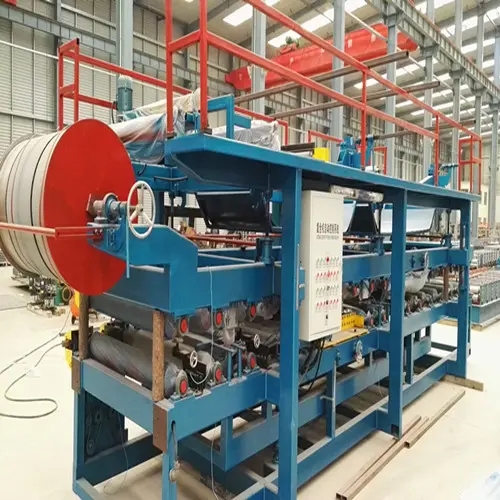
Understanding Down Pipe Roll Forming Machines
Roll forming is a widely used manufacturing process for creating metal products with a consistent cross-section. One of the significant applications of this technique is in the production of down pipes, which are essential components in the roofing and drainage systems of buildings. A down pipe roll forming machine is specifically designed to produce these vital structures efficiently and with high precision. In this article, we will explore the functioning, advantages, and applications of down pipe roll forming machines.
What is a Down Pipe Roll Forming Machine?
A down pipe roll forming machine is a specialized piece of equipment that shapes metal strips into down pipes through a series of rollers. The process starts with a flat metal sheet that is fed into the machine. As the material passes through the series of rollers, it is gradually shaped into the desired cross-section, which can be round, square, or rectangular, depending on the application. Once the shaping process is complete, the down pipes are cut to the required lengths.
The Process of Roll Forming
The roll forming process involves multiple stages. Initially, the metal strip is uncoiled and fed into the machine. The rollers are arranged in a sequence that applies specific forces to bend, stretch, and curve the material into the desired shape. Each roller serves a specific purpose, effectively shaping the strip as it passes through.
As the material exits the last set of rollers, it typically goes through additional finishing processes, which may include cutting to length and, at times, perforation or adding additional features like seams or flanges. This flexibility in design makes down pipe roll forming machines highly versatile.
Benefits of Using Roll Forming Machines
1. Efficiency Down pipe roll forming machines operate at high speeds, which allows for large production volumes in a short amount of time. This efficiency is paramount for manufacturers aiming to meet high demand.

2. Consistency The automated nature of roll forming ensures that each product remains consistent in shape and size, which is critical for fitting components during installation.
3. Material Utilization Roll forming minimizes waste by utilizing the entire length of the metal strip. This is particularly beneficial in cost management and environmental sustainability.
4. Versatility These machines can be adjusted to produce various sizes and shapes of down pipes, catering to different architectural and engineering requirements without the need for extensive re-tooling.
5. Durability The resultant down pipes from roll forming are typically sturdier than those made through other methods, thanks to the cold-forming process, which enhances the metal's mechanical properties.
Applications of Down Pipes
Down pipes are crucial in various construction and architectural projects, primarily serving to channel rainwater away from roofs to the drainage system. They play a vital role in preventing water damage to building foundations and ensuring proper drainage in urban landscapes.
In addition to residential buildings, down pipes are also employed in commercial structures, industrial facilities, and even in municipal plumbing systems. The demand for customized down pipes has increased, with many manufacturers seeking tailored solutions that meet specific project requirements.
Conclusion
In summary, down pipe roll forming machines are essential for modern construction and manufacturing processes, enabling the efficient production of high-quality, durable down pipes. Their advantages, including efficiency, consistency, and versatility, make them a popular choice in various applications. As the construction industry continues to evolve, these machines will play an increasingly critical role in shaping the infrastructure of our cities and communities. Investing in advanced down pipe roll forming technologies will not only enhance production capabilities but also streamline operations, offering a competitive edge in the marketplace.